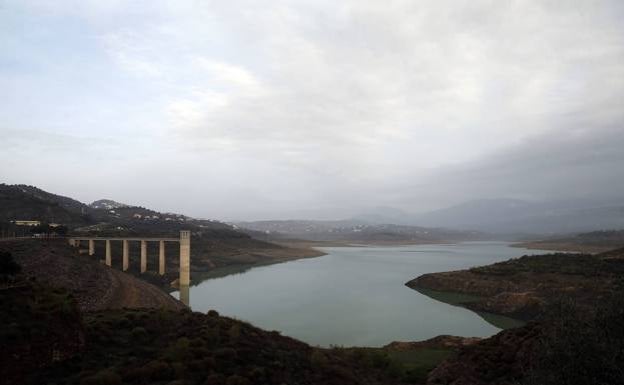The rain in March and April has filled two major reservoirs that supply Malaga city and the Costa del Sol
La Viñuela, which supplies the Axarquía region, is still officially at a critical level and water is being transferred from other areas in an attempt to preserve the small amount it contains
Ignacio Lillo
Malaga
Tuesday, 19 April 2022
The rain in March and earlier in April have considerably eased the situation in the reservoirs in the south of Spain, which had been at a critical level because of the prolonged period of dry weather.
La Concepción reservoir in Marbella, which supplies the Costa del Sol, gained 317 litres per square metre between 1 March and 18 April, and is now so full that water is being transferred from there to the Axarquía. The reservoir is still at 94% of capacity, despite the increased demand over Easter when many tourists visited the area.
Conde de Guadalhorce and La Viñuela
The Conde del Guadalhorce reservoir in Malaga, which together with those of Guadalhorce and Guadalteba supplies the city and the Guadalhorce Valley, is also practically full, at 96%. The total amount in these three reservoirs guarantees the supply in Malaga city for the next three years.
La Viñuela, on the other hand, has only gained four cubic hectometres with the recent rainfall and holds only 16.8 per cent of its capacity, so it is still officially at a critical level. Restrictions are in force for agriculture and domestic use in some areas, to try to reserve supplies in the face of the dry summer ahead.
However, some help is at hand in this region which is suffering so badly from the water shortage. Supplies are now able to be transferred to the Axarquía thanks to the Churriana ‘bypass’, a pipeline which came into operation on 4 April and means that 100 litres a second can be moved from La Concepción to the area. This water is for domestic use in towns on the Eastern coast of Malaga, which will help to preserve the supply in La Viñuela reservoir.
Emergency solutions to solve the water shortage problem
The latest rainfall has removed the threat of immediate drought in Malaga province, although it does not eradicate the overall water shortage problem that could affect the future growth of the area.
The Junta de Andalucía has activated a programme of emergency works to optimise existing resources, enable the transfer of water to areas that are still struggling, such as the Axarquía, and get more out of the water produced by the treatment and desalination plants.
Sixty-one million euros have been invested by the regional authority in emergency solutions to ensure a long-term supply, such as the renewal of the pipeline along the Costa, the transfer of water from the Iznájar reservoir in Cordoba to the Antequera district and the construction of a desalination plant in the Axarquía.
"Water can be the difference between being competitive and being left behind. We cannot ignore any source: water transfers, recycling, improved connections to carry water from areas with plenty to those that have a deficit and, of course, desalination," said Carmen Crespo, regional minister for Agriculture and Sustainable Development, in her speech at a SUR seminar held in Malaga on Thursday.

